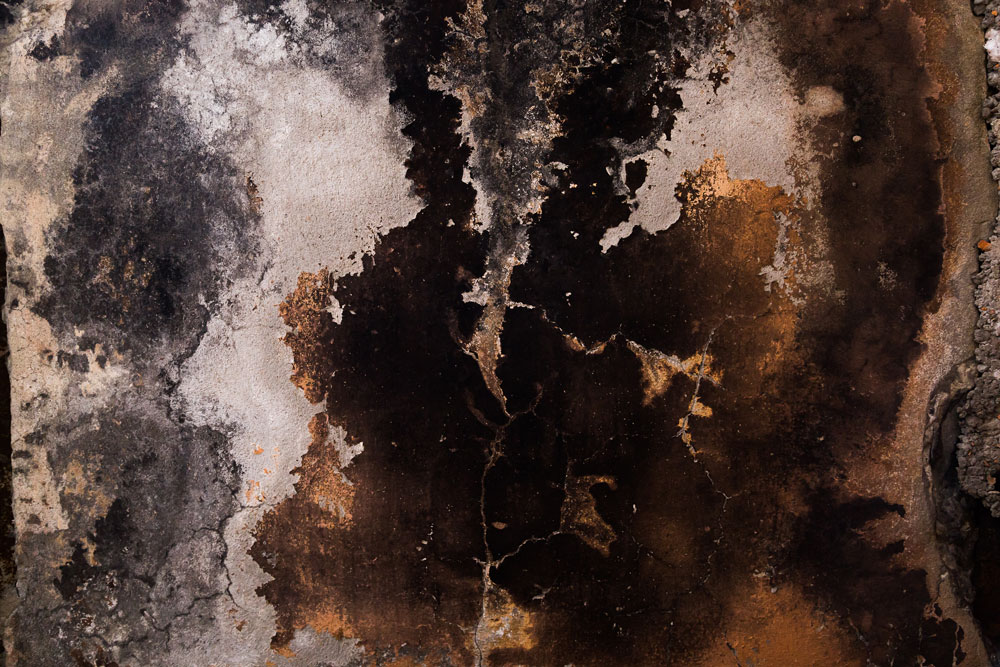How To Clean Fire Damaged Concrete
 CONTENTS
CONTENTS
- How does fire damage concrete?
- What are the dangers of fire damage?
- Why you must not remove fire damage from concrete yourself
- What you should do after a fire
- Book our fire damage cleaning service
Although concrete is one of the most fire-resistant building materials, a fire can permanently damage it and leave behind a dangerous environment. You must bring in professionals to clean up the fire and smoke damage immediately, and restore or replace the concrete as soon as possible.
Here at ICE Cleaning, we offer emergency response fire damage cleaning services. Our technicians can remove all traces of soot and ash, collect any waste, and neutralise lingering smoke odours for residential and commercial properties. We operate nationwide, round the clock, 365 days a year.
Read on to find out how to clean concrete that has been damaged by a fire.
How does fire damage concrete?
Intensive heat can severely weaken concrete and subject it to major chemical and mechanical changes including:
- Spalling: the concrete cracks and delaminates itself from the substrate
- Cracking: the concrete expands and dehydrates
- Discolouration: it turns pink because of chemical changes in compounds that contain iron
- Carbonation: the cement paste breaks down and there is a reduction in the alkalinity or protective coating
Severe fires can make concrete unsafe and unsalvageable, and it may need to be replaced. You must have the concrete checked by a structural engineer after a fire to ensure it is safe before you start the restoration process.
Fire and smoke damage might also leave behind lots of unsightly soot on the concrete and, as concrete is porous, it could easily absorb and retain an unpleasant smoke odour.
What are the dangers of fire damage?
After a fire, there will be lots of soot and ash in your property. Both can be harmful to your health and must be cleaned up thoroughly to protect yourself and others.
Soot is a toxic substance that can contain carcinogens which, when inhaled, ingested, or absorbed through the skin and eyes, can cause problems like bronchitis, coronary heart disease, and cancer. People with pre-existing breathing problems are particularly vulnerable to exposure.
As soot particles are on average 2.5 microns, they can easily travel around to other areas of your property, including rooms that were not affected by the fire.
Ash also contains cancer-causing chemicals, and may irritate the skin, eyes, nose, and throat. When inhaled, it could even trigger asthma attacks.
Why you must not remove fire damage from concrete yourself
Cleaning up soot might seem a simple task, particularly with so many DIY remedies online that recommend using household products like cola and bleach. But it is very difficult to remove as it is greasy and clings to surfaces.
Some of these methods also suggest harsh chemicals including bleach and muriatic acid which are very dangerous to use without personal protective equipment (PPE). Muriatic acid, for instance, is corrosive and can damage your skin.
Depending on where the fire damaged concrete is, when you rinse off the chemicals they may spill into the environment and cause pollution. You can find out more about why you must leave fire damage cleaning to the experts in this blog.
Cleaning it yourself may be a lengthy, manual process involving multiple rounds of applying chemicals, scrubbing, and washing them off, too. More effective techniques, like dry ice blasting, on the other hand, require training and expensive equipment, and can be dangerous if not done properly.
Professional cleaners will have the specialist products, equipment, and PPE to remove all the fire and smoke damage safely and effectively. They know how best to clean fire damage from concrete and can carry out smoke odour removal, as well.
What you should do after a fire
You must not enter the property until the fire department has confirmed it is safe to do so. Then, contact your insurance company who will take you through the next steps of restoring your property. Make sure you take lots of photos of the damage as evidence for your claim.
If you must leave your property during the restoration process, remove all valuable items and secure it to protect it from vandalism and theft. Find alternative accommodation if necessary to protect yours and other residents’ health until the fire and smoke damage is cleaned up.
Next, contact your electricity, gas, and water suppliers to have your supplies repaired and reconnected. Then, contact professional cleaning companies, like ICE Cleaning, to schedule fire damage cleaning.
You need to also have any masonry surfaces, like concrete, checked by a structural engineer to judge the damage and determine whether repair or replacement will be required. You can find out more about what to do following a fire in this blog.
Book our fire damage cleaning service
Our fully trained, reliable technicians can provide a stress-free fire damage cleaning service and quickly restore your property to a safe environment. In an emergency, they can be on site in a matter of hours.
Get in touch with our team on 0208 066 0360 or at enquiries@icecleaning.co.uk to schedule your free site survey and get a no-obligation quote.

Speak with me today,
I’m here to help
By asking you a few questions either via phone or email I can immediately provide a realistic estimation of the cost.
You’re in good company. We’ve cleaned for the following commercial clients… View all

Why choose us?
- Cater to a wide variety of cleaning situations
- Nationwide coverage, available 24/7
- Cater to commercial and domestic clients
- Free survey provided prior to quotation
- Emergency response team
- Offer a bespoke service designed to suit all your needs
- All technicians hold professional health and safety qualifications, including BICSc, IOSH, Dewpoint Professional & Safe Contractor
We’re fully accredited
We place best practise, professional expertise and health and safety at the core of our business. We’re fully compliant with all legal obligations. You can view a list of our accreditations below, or visit our Health & Safety page for more information.











-RGB-small.1707319151.jpg)




















